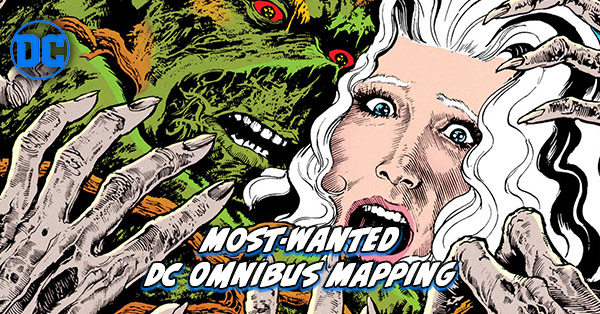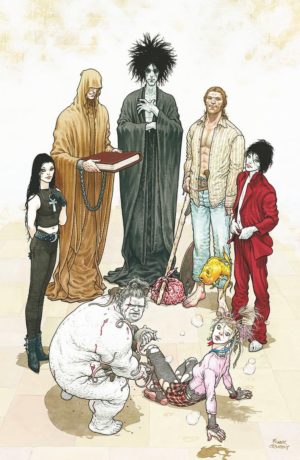 It’s time to explore the darker side of DC – Vertigo heroes and the Sandman Universe omnibuses! I’ll be loosely mapping missing and most-wanted DC omnibus volumes every day until May 19th! Then, on the 19th, I’ll be joining with Near Mint Condition to launch the first annual Tigereyes Most Wanted DC Omnibus Annual Poll! This post covers omnibuses missing from DC’s in-continuity Vertigo titles – and not creator-owned Vertigo work.
It’s time to explore the darker side of DC – Vertigo heroes and the Sandman Universe omnibuses! I’ll be loosely mapping missing and most-wanted DC omnibus volumes every day until May 19th! Then, on the 19th, I’ll be joining with Near Mint Condition to launch the first annual Tigereyes Most Wanted DC Omnibus Annual Poll! This post covers omnibuses missing from DC’s in-continuity Vertigo titles – and not creator-owned Vertigo work.
This post explains potential Vertigo heroes and Sandman Universe Omnibus Mapping for votes on the Tigereyes Most Wanted DC Omnibus 1st Annual Secret Ballot. I’m posting all of these maps before the poll begins to give people the time to consider their favorites, correct our mapping mistakes, and catch books I might have missed.
What characters am I including in this broad category? Any Vertigo character who originated in DC continuity or later returned to it. That includes Animal Man, Hellblazer, Shade The Changing Man, Swamp Thing, and the extended Sandman Universe (including Black Orchid, Books of Magic, The Dreaming, Lucifer, & Sandman Mystery Theatre).
If you don’t know DC well enough to know what to vote for, stick around for my explanations! Learn why the team behind the poll decided on these books and titles – including giving us feedback if we missed the mark.
If voting is now open, you can use this as your crib sheet! Or… just find some great comics to read!
Remember: These mappings are just my suggestion of how DC could assemble these books. They are meant to help you decide on your votes and build your personal reading list, but your vote on the poll is NOT an endorsement of my specific map. It’s a vote in favor of DC creating a book with that title or covering that period.
High-effort, heavily-researched, over-the-top comics posts like this one are made possible via the support of Patrons of Crushing Krisis. For less than the cost of a single comic issue a month you can fuel my in-depth comics coverage, plus gain access to dozens of exclusive collecting guides & reading orders – including all of the Crushing Comics Guide to DC Comics.


